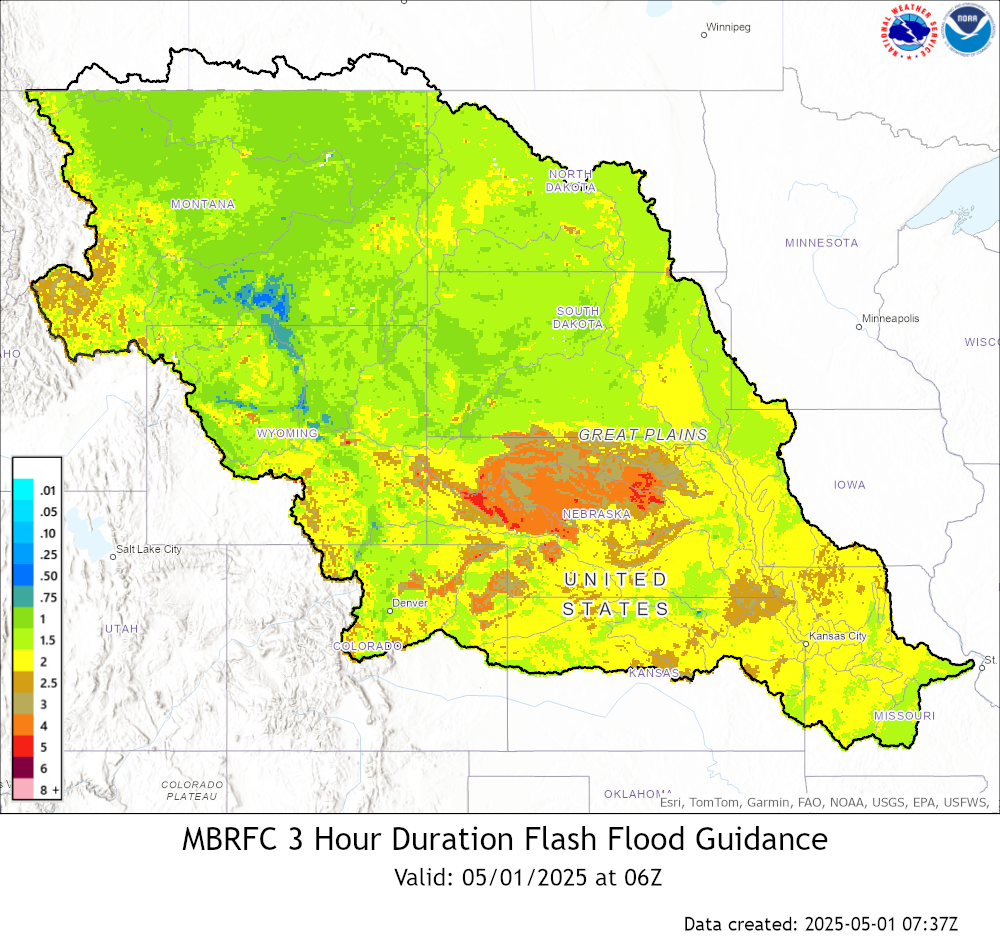NDCMP Weather Forecast
| District 1 | District 2 | |||||||||||
|---|---|---|---|---|---|---|---|---|---|---|---|---|
| Transition (UTC) | 20 | 3 | 20 | 3 | ||||||||
| First | Second | Third | First | Second | Third | |||||||
| Forecasted Weather | NO SIG | RAIN | NO SIG | NO SIG | TSRA | NO SIG | ||||||
Forecaster: Joseph Russell
Synopsis
The much-talked-about ridging and drier pattern is finally making its way into the project area. The troughing we've been stuck with over the past several days has finally exited its way east, and we are beginning to feel the influence of the strong ridge that has built up across the west coast. Things will continue to progress east today, but we are not entirely clear from some weather, as the eastern edge of the project area will still have some influence from the mid-level troughing. CAPE values at their highest will still be very low, and forcing is virtually zero outside of fringe vorticity impluses that are pushing southeast just east of the region. In the upper levels, a notable increase in dry air supports the idea that much in the way of precipitation will be extremely isolated. With the ridging moving in, a more dense smoke pack has settled in with notable hazy conditions at the surface here in Stanley. That will continue across most of D2 as this smoke pack shifts through, D1 will also experience hazy conditions, but thanks to weak winds across all levels the more dense pack will stay to the north. D1: Further removed from the forcing and virtually zero CAPE, even when using unstable CAPE, leads me to believe there will be little in the way of activity across district. That being said, some high-res models have that vort max to the east being uncomfortably close to the district. Taking that into account, paired with much drier air I think there is a possiblity a few rain showers will develop across the mid-level and impact the eastern portion of district. Right now all parameters support rain but not looking favorable for seeding. Those showers should die out by sunset. D2: With the larger district and being closer to the origin of the vort max that is sliding off to our east I placed a TSRA risk. This is again primarily for the eastern half of D2 as there is marginal CAPE upwards of 250 j/kg, and thats where capping will be the weakest, along with the increased potential for sufficient forcing from that close proximity vort max. Upper-level temperatures are much warmer with the approaching ridge and lack of CAPE tells me storms will struggle to meet that hail threshold, and those that do develop will even struggle beyond low-end convection. Seeding conditions may be tough due to the very pulsy style, and given the best chances, they are in counties with rain enhancement suspended, not to mention the hazy conditions making it harder to identify storm bases and growth.
7/8/24
Indices
| Lifted Index (<1) |
K index (>30) |
Total Totals (>48) |
Sweat (>200) |
Cape (>125) |
CIN (>-100) |
Bulk Richarson Number (>3) |
Helicity (>125) |
|
|---|---|---|---|---|---|---|---|---|
| D1 | 2.9 | 33.2 | 44.7 | 92 | 0 | 0 | 0 | 31 |
| ISN | 1 | 35.8 | 46.8 | 136 | -61 | -100 | 3 | 56 |
| MOT | 0.3 | 30.8 | 46.9 | 163 | 67 | -69 | 8 | 45 |
| Jefferson Index (>28.5) | Cross Totals (>18.65) | Thompson Index (>28.5) | S Index (>35.8) | Showalter Index (<=0.5) | Cap Strength (0-2.65°C) | |
|---|---|---|---|---|---|---|
| D1 | 29 | 14.6 | 30.3 | 42.3 | 2.8 | 0 |
| ISN | 31 | 18.2 | 34.8 | 45.2 | 1 | 0.4 |
| MOT | 29 | 21 | 30.5 | 40.7 | 0.3 | 0.4 |
Weather Features
- Smoke
- Surface High Pressure
- Upper Level Ridge
- Upper Level Trough

